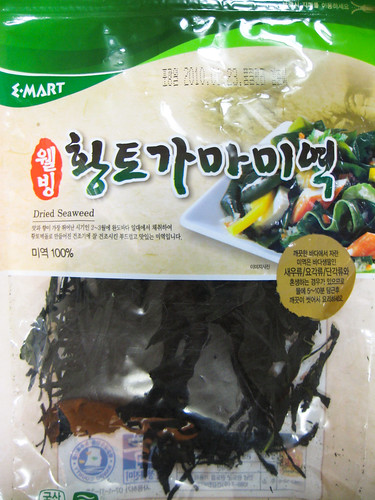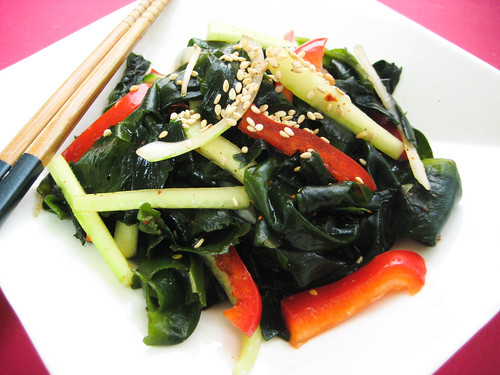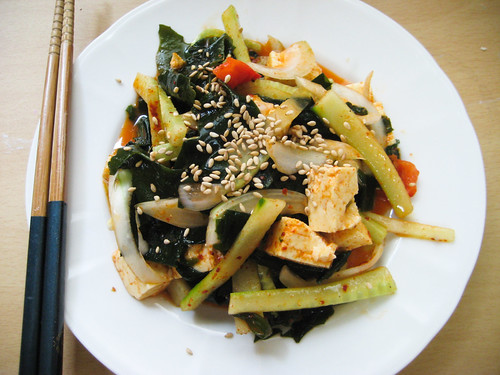
You know how I talked about how I used to hate beans, but now love them? Well, here's another food I absolutely used to detest: seaweed! Or "sea vegetables," if you prefer that name. A variety of sea vegetables are used in Korean cuisine, and they're used to make all kinds of dishes, like kimbab, a bunch of banchans, and miyuk-gook (a savory 'wakame' seaweed soup). Kelp is also used to flavor stock for jjigye's. Growing up, I loved eating kim (toasted, oiled and salted nori sheets) with rice, but I had a real problem with the slimy texture of miyuk seaweed, especially if they were big, thick, curly, and slimy all at the same time. It's traditional for Koreans to eat miyuk-gook on birthdays, but that was never a part of my birthday meal. However, I'm happy to announce that I have re-evaluated my judgment of seaweed and have now welcomed them as part of my life. Ok, I admit, there are still certain types of seaweed that I'm a little iffy about eating, but I've come a heck of a long way. Just the fact that I actually purchase my own seaweed and use it in my own cooking, is a huge deal for me. I feel so mature and evolved, not to mention, healthy. Sea vegetables are packed with nutrients, especially iron, which is a big reason why I started eating them in the first place.
My current favorite way of eating miyuk seaweed is a traditional Korean side dish called Miyuk ChoMuChim (미역 초무침). There are a variety of ways to make it, but it's basically a seaweed salad, usually with onions and cucumbers, and a vinegary dressing.

{ Ingredients }
1.5 cup of soaked wakame seaweed
1 cucumber, thinly sliced
1/2 medium onion, thinly sliced
1/2 red bell pepper
3 Tbs brown rice vinegar
1-2 Tbs soy sauce
1/2-1 Tbs sugar (or any sweetener you prefer)
1/2 Tbs red pepper flakes (optional)
1/2 tsp sesame oil (optional)
sesame seeds
{ Method }
1. If you're using dried seaweed, first soak it in water until it becomes soft (maybe around 30 mins). Then throw it in some boiling water for a quick minute, to kill any germies that may be on them. After rinse with cold water and drain. Cut them into bite-size pieces.
2. Chop up all your vegetables into thin slices (or however you like), and add to the seaweed.
3. Mix the vinegar, soy sauce, sugar, red pepper flakes, and sesame oil together in a small bowl to make the dressing. Pour over the seaweed and veggies, and mix well.
4. Sprinkle sesame seeds on top.
5. Serve right away, or you can refrigerate it for later. Enjoy!

This is a slightly different version, that uses 1Tbs of gochujang (Korean red pepper paste), in place of the soy sauce, to make a spicy, yet sweet dressing. Just dissolve or loosen the gochujang up in the vinegar before you pour it over the seaweed and veggies. I also added cubed tofu to this one. Feel free to add other veggies, like thinly sliced carrots, green onions, yellow bell peppers etc... Yummerz!